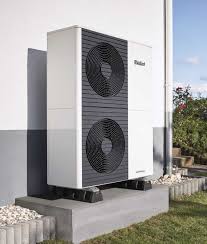As being the requirement for energy-efficient technology boosts, numerous governments around the world are providing financial assistance in order to let the ownership associated with heat pumps. Being familiar with these types of credits can easily considerably impact your responsibility so that you can choose heat pump procedure, finally bringing about major benefits and also environment benefits.
What exactly Are Heat Pump Tax assistance?
Administration tax assistance for heat pumps typically appear in the form of income tax loans, incentives, or even allows aimed at minimizing your initial installation costs. These kinds of rewards are created to help to make heat pumps a lot more available along with attracting house owners in addition to enterprises, therefore advertising electricity performance and also reducing green house natural gas emissions.
To be eligible and Request
For you to be eligible for financial assistance, job seekers generally should meet distinct criteria. This will include utilizing qualified apparatus along with next installation tips set forth by simply government programs. It truly is vital to investigation nearby along with countrywide products, as to be eligible specifications may vary widely. Often, applications has to be processed in a certain time-frame just after installment, so tracking output deadlines can be crucial.
Long-Term Economical Advantages
The upfront personal savings via administration subsidies can easily substantially balance out not hard to install fees of an heat pump. On top of that, heat pumps give cheaper managing expenses when compared to regular heating methods, as a result of its substantial electricity efficiency. With time, the amalgamation with financial aid and reduced power expenses may result in extensive economic savings.
Ecological Impact
As well as economic benefits, federal products often highlight the environmental benefits associated with heat pumps. By reducing reliance on fossil fuels and also reducing h2o and emissions, scalping strategies line up along with bigger sustainability goals. Involved in subsidy applications besides benefits specific home owners but in addition makes a contribution to national plus world-wide work so that you can battle environment change.
Summary
In summary, understanding federal tax assistance to get heat pump (tepelné čerpadlo) generally is a game-changer with regard to householders thinking of the following energy-efficient option. By way of utilizing accessible bonuses, people can make a wise financial commitment that besides improves the properties comfort and ease but supports enviromentally friendly sustainability. Make sure to check out regional applications to be able to improve your benefits.


